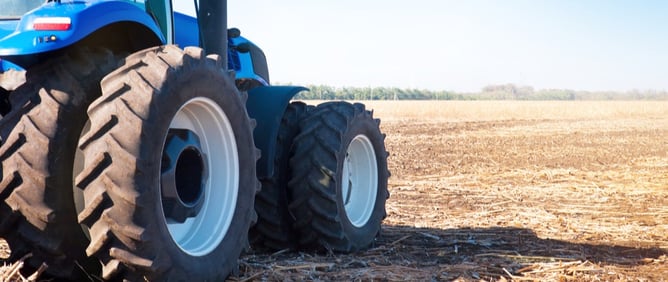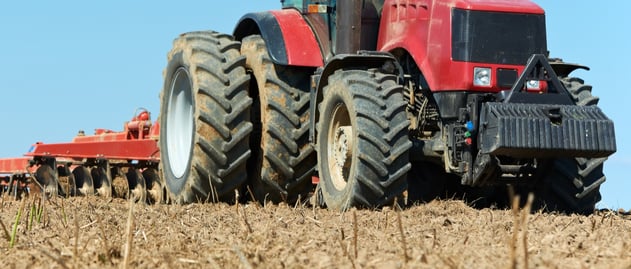Deciding what tires to recommend for your customer can be difficult and can depend significantly on what their equipment will be used for. There are different brands and sizes to consider in order for your customer to get the most out of the tires on their agriculture equipment. Once it's been decided whether the tractor will be set up for duals or singles, standard tractor tire setups are a great place to start.

Let’s look at the most common tractor setup for singles and duals:
The most common single setup on a tractor is 800/70R38’s floatation tires on the rear, and 600/70R30’s on the front. You can also run 710/70R42’s on the rear, keeping the fronts the same (600/70R30’s), depending on what your customer wants to do. This setup gets your customer standard flotation and roadability. If your customer is looking for a unique application setup, give us a call, and we can help you from there.
The Firestone 800/70R38 is a popular tractor tire choice as it features an extra deep tread pattern that is almost 25 percent deeper in the center for improved wet traction. With a proven 23-degree bar angle, this tractor tire delivers ultimate traction in all soil types, making it a popular choice among farmers everywhere.
The Firestone 600/70R30 tractor tire was designed specifically for narrow row crop work. The Firestone Radial All Traction tractor tire’s R-1W tread depth and multi-angle tread design provide excellent wet traction and road wear. Designed to minimize soil compaction, the bead and rim flange protector of this tractor tire keeps debris from lodging between the tire and rim for reduced downtime. Making this tire a widely favored option when working in wet conditions.

Switching gears to duals, the most common dual setup on a tractor is 480/80R50’s on the rears, and 420/85R34’s on the fronts. Now, if your customer is working in narrow rows, we may recommend putting 380/80R38’s on the fronts so they don’t run too wide on their crop. Both tires are still great options, but it depends on how narrow or wide their rows are.
If you have any questions on tractor set-ups or would like to talk in more depth with your Client Advisor, contact us today:
